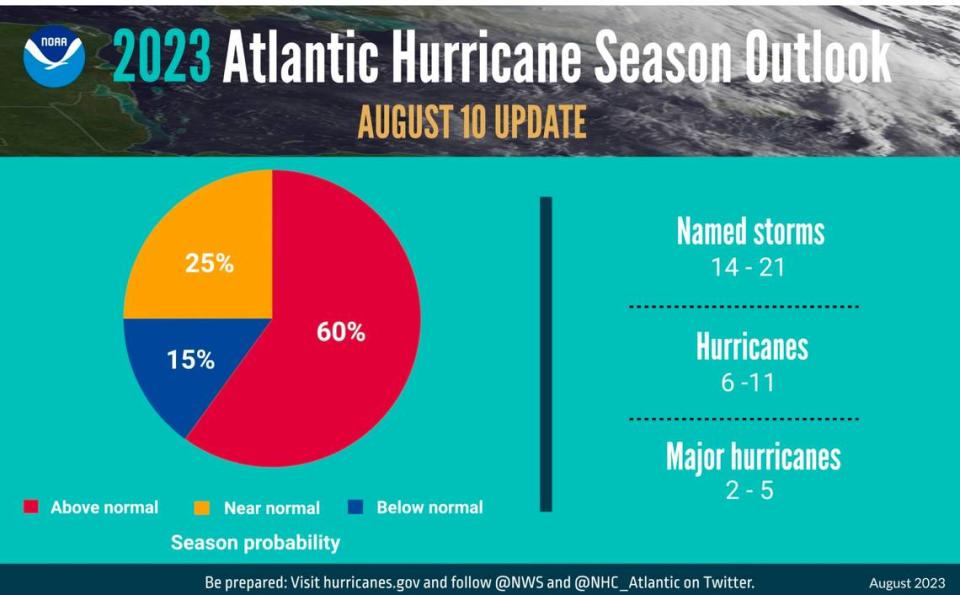Here’s what SC may face for remainder of hurricane season 2023, new NOAA forecast shows
South Carolina is expected to have an above-normal hurricane season for the remainder of the year, National Oceanic and Atmospheric Administration forecasters say.
According to a Thursday announcement, NOAA has raised its prediction for the 2023 Atlantic hurricane season from a near-normal level of activity it had forecast earlier this year.
“Forecasters believe that current ocean and atmospheric conditions, such as record-warm Atlantic sea surface temperatures, are likely to counterbalance the usually limiting atmospheric conditions associated with the ongoing El Nino event,” the NOAA announcement reads.
Last year the Atlantic hurricane season had 14 named storms, according to NOAA. The 2022 season included Hurricane Ian, which, after plowing through Florida, landed around Georgetown, S.C. in September with sustained winds of 85 mph, caused coastal flood damage and destroyed several large piers near Myrtle Beach.
Hurricane prediction breakdown
The likelihood of an above-normal hurricane season has increased to 60%, NOAA forecasters say. The updated forecast, which includes the entire hurricane season that lasts from June through November, calls for 14-21 named storms (winds of 39 mph or greater), of which six to 11 could become hurricanes (winds of 74 mph or greater). And of those, two to five could become major hurricanes (winds of 111 mph or greater). These updates include storms that have already formed this season.
The 2023 Atlantic hurricane season has had five storms that have reached at least tropical strength, including one hurricane.
There are 14 named storms in an average hurricane season, seven of which become hurricanes, including three major hurricanes, NOAA states.

El Niño impact
The Atlantic hurricane season was previously expected to be less active than recent years, in part because of the arrival of El Niño, which has been known to suppress Atlantic hurricane activity.
“So far, those limiting conditions have been slow to develop and climate scientists are forecasting that the associated impacts that tend to limit tropical cyclone activity may not be in place for much of the remaining hurricane season,” NOAA states.

